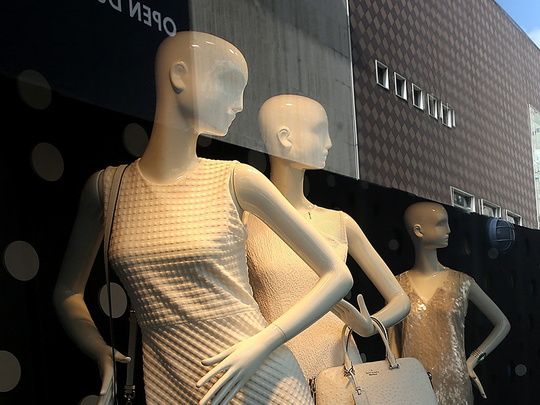
As the Dubai Shopping Festival drew to a close last month, I was once more reminded of the sheer number of malls that participated in this shopping extravaganza. Malls are a visible landmark in everyday life in the UAE, especially in Dubai. They are numerous ranging from grandiose mega structures such as Dubai Mall to the average modest ones like Al Ghurair Mall. Although the modern shopping mall is an American invention, all major malls are now to be found in Asia and the Middle East. Dubai most likely has/holds the world record for the city with the highest mall density, situating several high end malls within the vicinity of a few kilometres.
Dubai malls have become part of the globalisation process by ways of copying and being copied by American malls. Mall developers in Dubai have surely looked for inspiration and modelled aspects of their gigantic creations after US styled malls but there has been a reciprocal effect as well. The American Dream Mall, projected to open in 2016 in New Jersey, has built a similar indoor ski slope, which closely resembles that of the Mall of the Emirates.
The ‘malling of America’ has been effected by the recent economic recession that has seen many malls going bankrupt, leading them to become ‘dead malls’— empty ghostly structures. This trend, however, does not seem to have affected Dubai in the least. Dubai is where malls flourish and there seems to be an insatiable appetite to expand and build more. The UAE, according to various retail experts, is witnessing an increase in community malls which complement the large scale malls in terms of catering to different target audiences. Mall development is based on an overly optimistic estimate that high-income professionals that currently reside in Dubai will only increase once Expo 2020 opens.
For the eager consumer or innocent shopper, malls fulfil a variety of functions. For one, they are found to be convenient since one can find anything desired under one roof. Not only are there designer stores and top brand names represented, but most malls also house branches of banks, convenience stores, restaurants, bakeries, and pet stores, to name just a few. Given the hot temperatures throughout most of the year, malls offer a cool atmosphere for shoppers and an escape from hot and humid outdoors.
Attracting visitors
Thematic aspects are very often part of what makes a mall famous. Ibn Battuta Mall is based on a famous Arab traveller and segments of the mall are subdivided into different courts that carry different country names. In essence, malls have become tourist attractions. Visitors flock to ‘famous’ malls to experience and witness what this or that mall has to offer. There is a competition of sorts that seeks to attract more visitors to its indoor facility. Malls create an atmosphere that is called “conspicuous consumption”. This is a concept in modern capitalist societies based on the notion that individuals often buy “expensive items to display wealth and income rather than to cover the real needs of the consumer”. This is said to designate a higher social status that others are ultimately driven to emulate. What often goes unnoticed to mall visitors is that malls exert control over customers since the placement of food courts, escalators, and stairs forces customers to traverse corridors and pass attractive shop windows. Strategic placement of shops as well as goods within shops leads people towards products they might not otherwise buy. Subconsciously, consumers are influenced by the power of imagery that drives them to become willing consumers, spurred on by a continuous stream of induced desires that need to be satisfied by purchase of specific goods.
Promotions are another means designed to enhance the visitor’s experience. Discounts of up to 50-75 per cent make us believe that we are getting bargain prices (which is nearly always not the case) and stimulate buyers to purchase more than they actually need or intended to buy, just because it is seemingly a deal that cannot be passed up. Another negative side effect in the abundance of shopping malls is overspending and indebtedness among large segments of the population which is compounded by easy access to credit cards and short-term views of financial planning. That said, I just came across a sale on HD TVs, and I think my two-year old TV is not big enough. The ad says it’s 50 per cent off the original price and they accept credit cards. I think I’d better head down to the mall now …
Kristian P. Alexander is Assistant Professor in the College of Sustainability Sciences and Humanities, Zayed University, Abu Dhabi.











